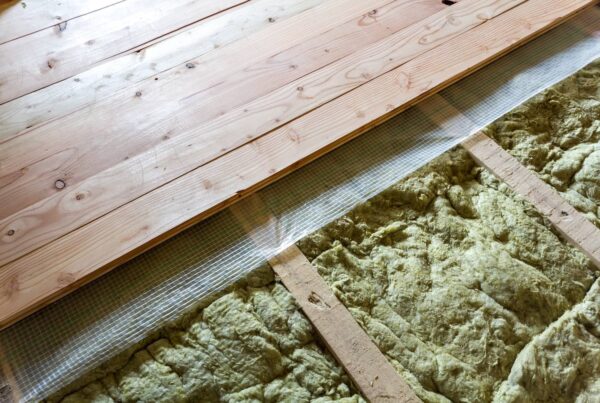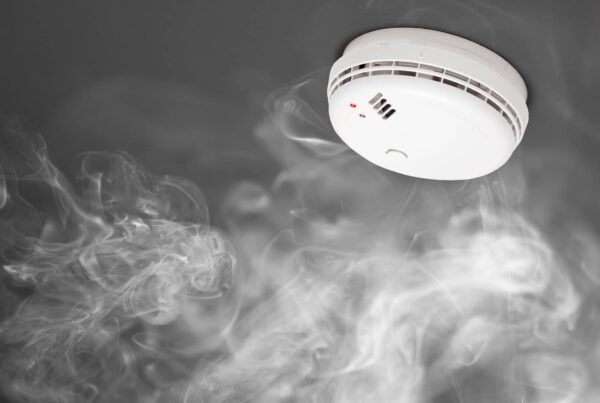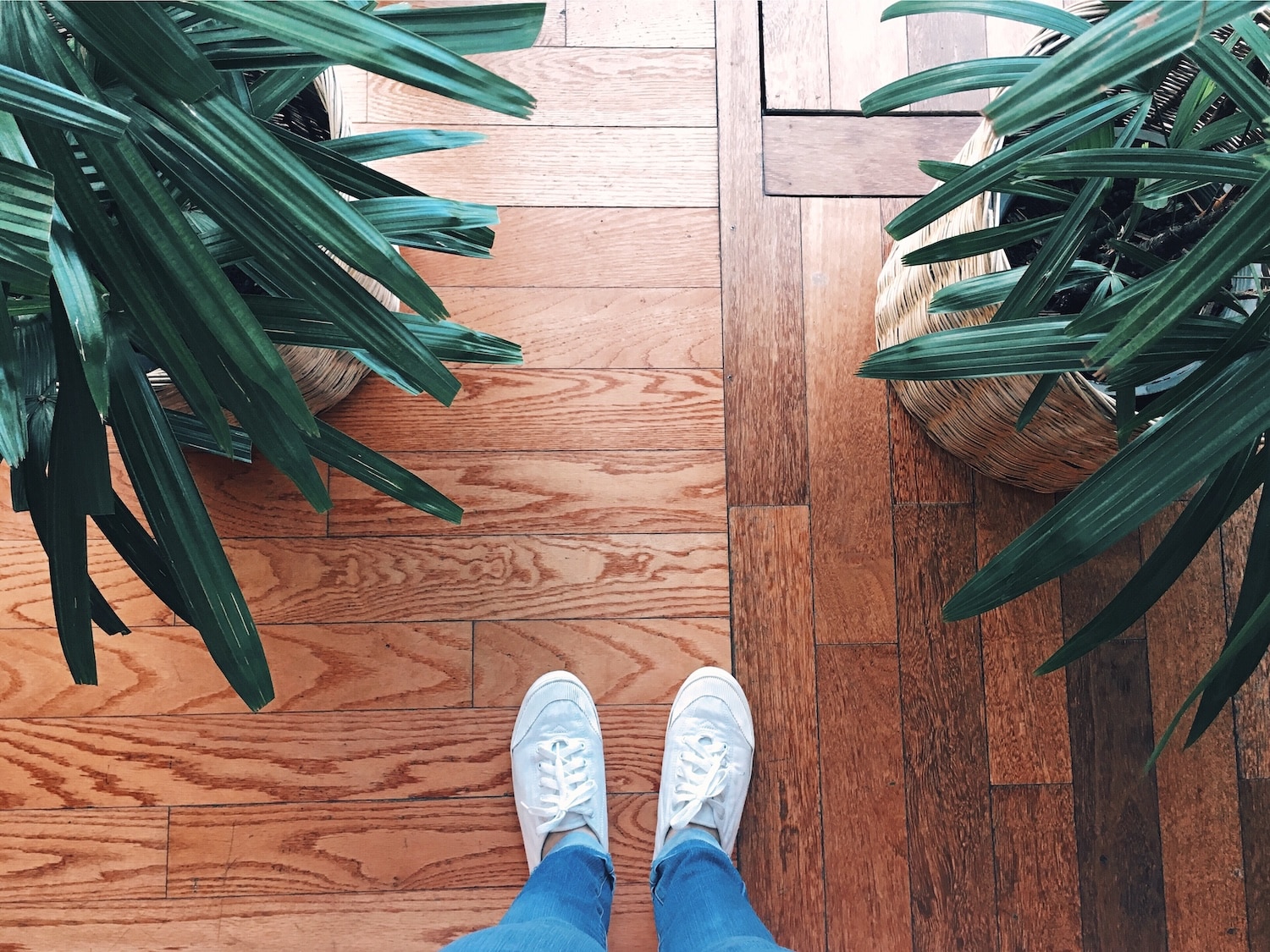
Squeaky floorboards are a common problem to fix in many homes, especially older ones or those built with wood framing. The sound might not seem like a big deal at first, but it can become a constant source of frustration. Worse, it might signal hidden issues under the surface, especially if the home has been sitting vacant, exposed to high humidity, or shifting over time.
Whether you’re living with the noise or preparing to sell your home, it’s smart to understand why floorboards squeak and how to fix them before the issue gets worse.
Spot the Source
Before you can fix squeaky floorboards, you need to figure out what’s causing the noise. Not all squeaks come from the same place.
In most homes, squeaks happen because two parts of the floor are rubbing together, wood against wood, nails sliding in and out of joists, or subfloor panels shifting under pressure.
Here’s how to find the squeak:
- Walk slowly over the floor and listen for the noise
- Try to feel movement underfoot, which can show where the boards are loose
- If it’s under carpet, press down and listen closely
- Check for areas where flooring seems slightly raised or uneven
Squeaks near walls can mean shifting framing, while squeaks in the middle of a room often point to subfloor or joist issues.
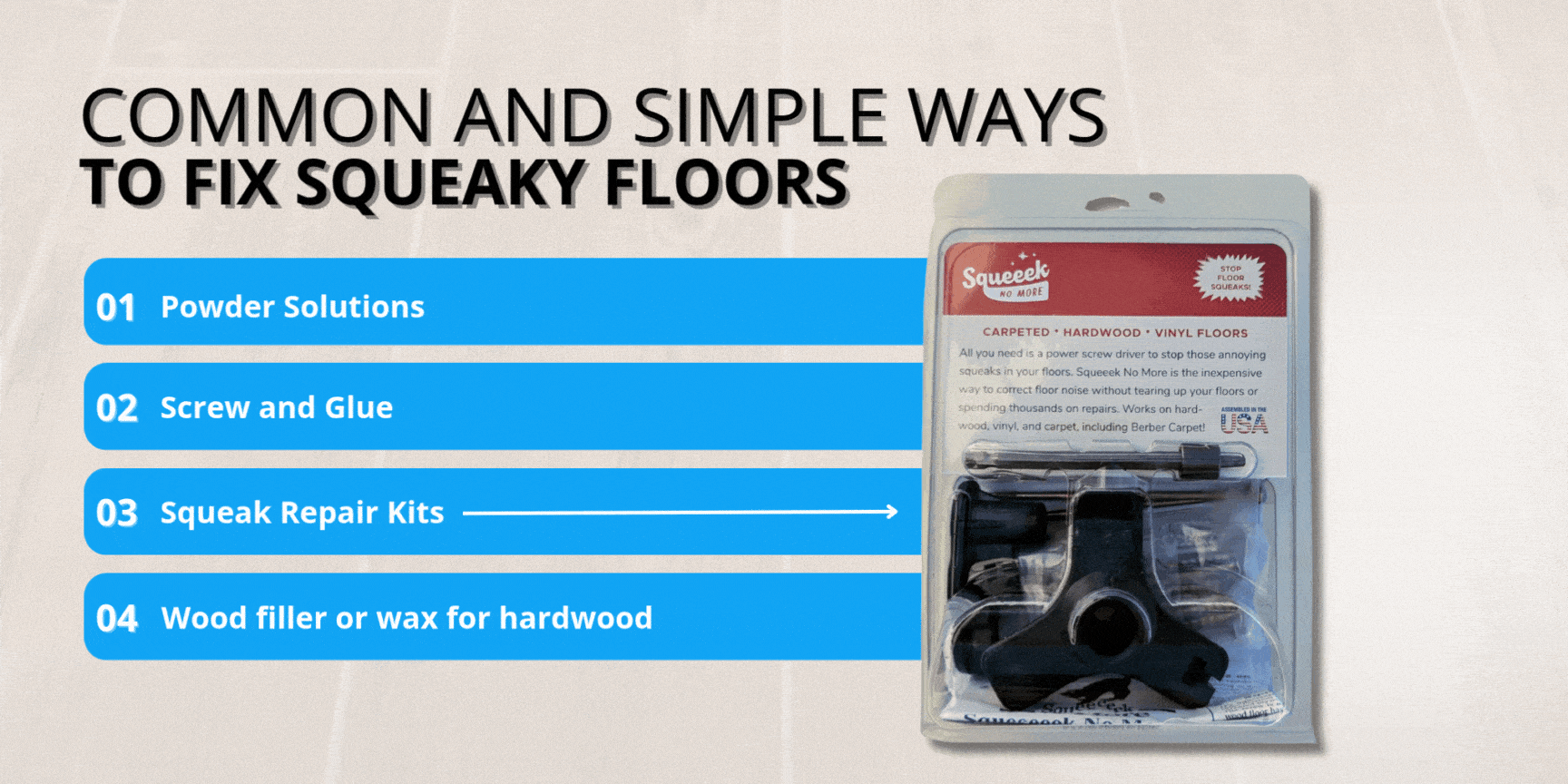
Quick Fixes
If you’ve found the source and the floor is otherwise in good shape, there are a few simple ways to fix squeaky floorboards on your own.
1. Powder Solutions (for minor surface squeaks):
Sprinkle baby powder, baking soda, or powdered graphite between the boards. This helps reduce friction between wood pieces. Press the powder in with a brush or cloth and test the spot by walking on it again.
2. Squeak Repair Kits (under carpet or finished floors):
These kits (available at most hardware stores for $10–$30) use special screws that anchor the subfloor to the joist without damaging the visible floor.
For carpeted areas, some kits let you snap the screw heads off below the surface after securing the floor.
3. Screw and Glue (for open subfloor access):
If you can access the underside of the floor (like from a basement or crawl space), you can fix squeaks by applying wood glue between the joist and subfloor, then securing with short wood screws.
Make sure not to use long screws that puncture the finished floor above.
4. Hardwood Floor Fixes:
For hardwood floors, drill small pilot holes and insert trim-head screws to pull loose boards tight. Fill the holes with matching wood filler or wax sticks for a clean finish.
Don’t Make These Mistakes
Trying to fix squeaky floorboards can backfire if you’re not careful. Here are a few pitfalls to avoid:
- Overtightening screws can crack the wood or cause more separation
- Using the wrong filler can leave ugly marks or prevent the boards from moving naturally
- Ignoring moisture levels might fix the squeak today, but the boards could swell or shrink again later
- Skipping inspection when squeaks are widespread could mean missing larger structural problems
If your home has high humidity or has been unoccupied for a while, the squeaks might be a symptom of deeper damage, especially in the subfloor or joists.
What If It Still Squeaks?
If none of the basic fixes work or the squeaks return quickly, there could be a bigger issue at play. Recurring floor noise can be caused by:
- Warped or undersized joists
- Subfloor panels separating from the framing
- Termite damage, rot, or water intrusion
- Foundation shifting or uneven settling
These types of problems aren’t always visible from the surface. That’s why a full home inspection is a smart step, especially if you’re buying or selling a home.
Floor issues might seem like a minor cosmetic problem, but they often show up in inspection reports and can delay closing if left unresolved.
According to HomeAdvisor, professional subfloor repair can range from $300 to over $1,000, depending on the extent of the damage. Catching issues early through an inspection can save you time, money, and stress.
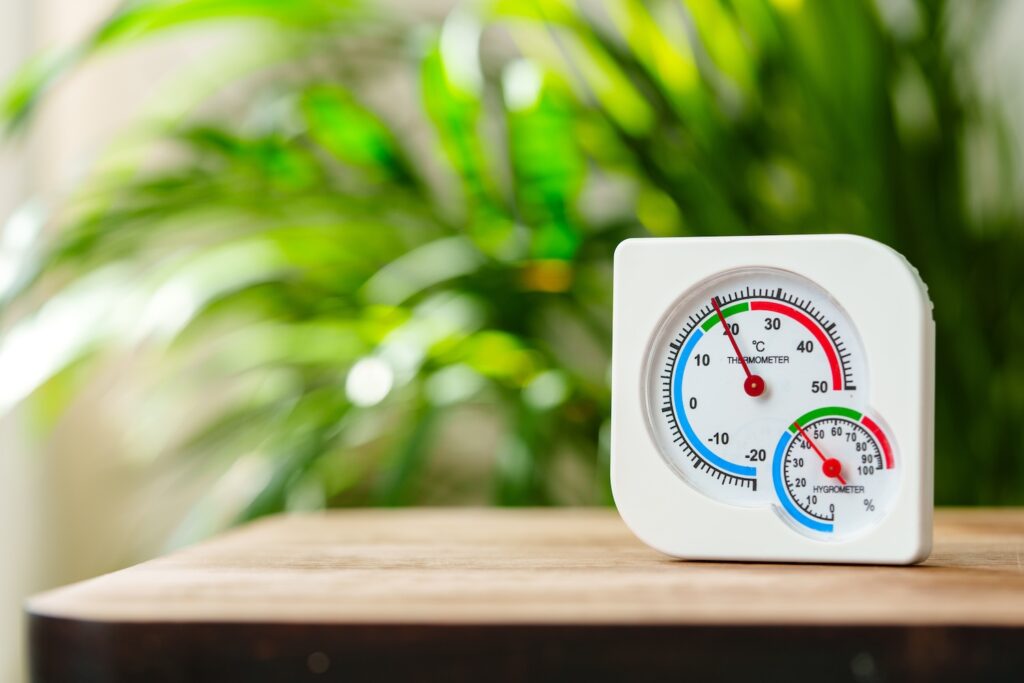
Other Recommended Maintenance
While you’re already paying attention to your floors, here are a few smart habits to keep things in better shape:
- Check for loose baseboards or trim and secure them with finish nails
- Use a hygrometer to monitor indoor humidity (aim for 35–55%)
- Inspect for signs of moisture in crawl spaces, attics, or under sinks
- Schedule annual home maintenance inspections, especially if your home is more than 10 years old
When to Call a Professional
You don’t need to call in help for every little squeak, but some signs mean it’s time to bring in a pro:
- The noise is happening in multiple rooms
- Floors feel soft, bouncy, or uneven
- You’ve tried DIY fixes and the squeak always comes back
- You’re selling the home and want to avoid surprises during inspection
- You’ve noticed signs of water damage, pests, or cracking
A professional home inspection can help uncover the root cause, document the issue in a report, and guide you toward the right repair.
At All Coast Home Inspections, we’ve walked thousands of floors across Houston and surrounding areas. We know the difference between a harmless squeak and a serious warning sign.
Our inspectors look beyond surface-level problems to make sure your home is safe, sound, and ready for what’s next.
Conclusion
Squeaky floorboards might seem like a small annoyance, but they can lead to, or uncover, larger issues in your home.
Whether you’re patching up a spot before listing your house or just tired of the noise, knowing how to fix squeaky floorboards puts you one step ahead.
If the noise doesn’t stop or if you’re unsure what’s behind it, don’t wait for it to get worse. Schedule a home inspection with All Coast today and get a clear view of what’s really happening beneath your feet.

